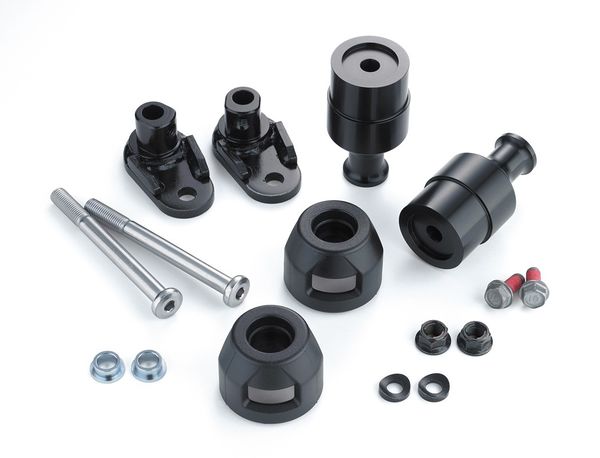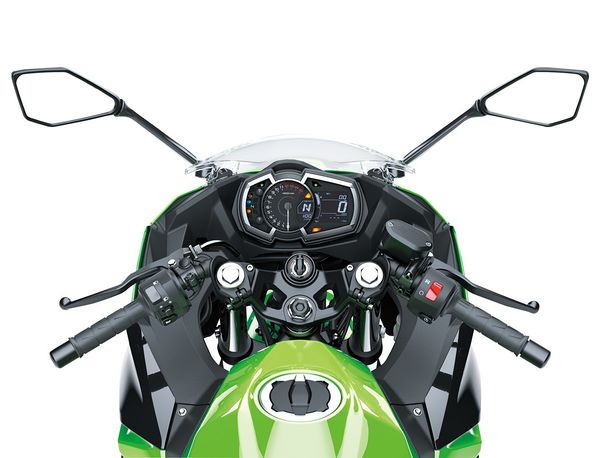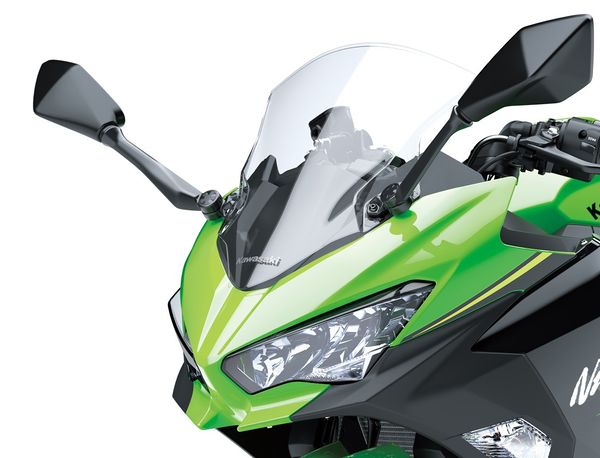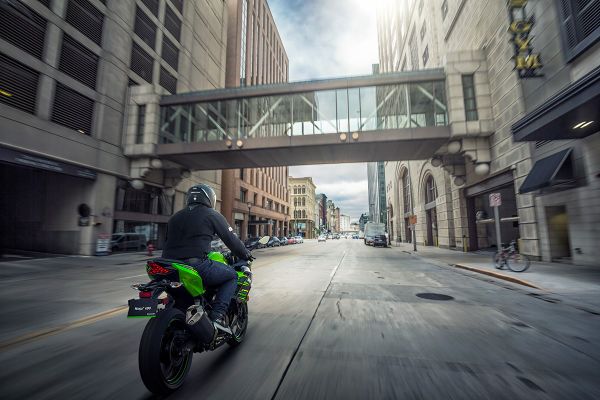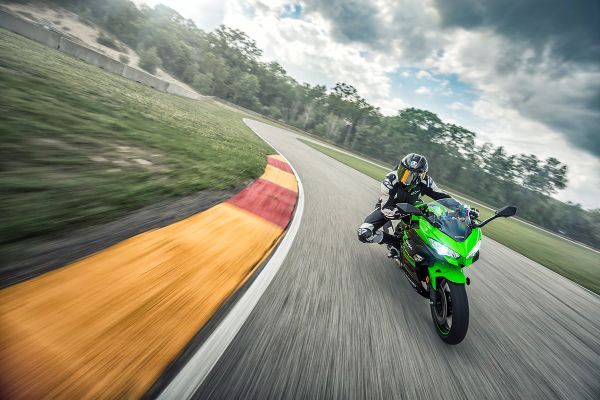Kawasaki Ninja 400
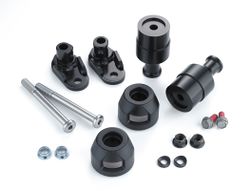 |
|
| Kawasaki Ninja 400 | |
| Manufacturer | |
|---|---|
| Also called | Ninja 400R ABS, Ninja 400R Special Edition, Ninja 400 ABS Special Edition, Ninja 400 Special Edition, Ninja 400 KRT Edition, Ninja 400R |
| Production | 2011 - 2019 |
| Class | Sport Bike |
| Engine | twin, four-stroke |
| Bore / Stroke | 70.0mm x 51.7mm |
| Compression ratio | 11.5:1 |
| Horsepower | 43.05 HP (32.1 KW) @ 9500RPM |
| Torque | 28.03 ft/lbs (38.0 Nm) @ 8000RPM |
| Fuel System | injection. dfi® with 32mm throttle bodies |
| Ignition | tcbi with digital advance |
| Transmission | Gear box: 6-speed Final Drive: chain |
| Suspension | Front: telescopic fork Rear: bottom-link uni-trak®, swingarm adjustable preload |
| Brakes | Front: single disc. hydraulic. two-piston calipers. Rear: single disc. hydraulic. two-piston calipers. |
| Front Tire | 110/70-17 |
| Rear Tire | 150/60-17 |
| Wheelbase | 53.94 inches (1370 mm) |
| Length | 78.35 inches (1990 mm) |
| Width | 27.95 inches (710 mm) |
| Height | 44.09 inches (1120 mm) |
| Seat Height | 30.91 inches (785 mm) |
| Weight | 405.65 pounds (184.0 Kg) (dry), 168.0 kg (wet) |
| Oil Capacity | 0.61 Gallon (2.30 Liters) |
| Recommended Oil | K-tech 10W-40 |
| Fuel Capacity | 3.7 Gallon (14.00 Liters) |
| Fuel Consumption | 4.17 liters/100 km (24.0 km/l or 56.41 mpg) |
| Manuals | Service Manual |
The Kawasaki Ninja 400 was a twin, four-stroke Sport Bike motorcycle produced by Kawasaki between 2011 and 2019. Max torque was 28.03 ft/lbs (38.0 Nm) @ 8000 RPM. Claimed horsepower was 43.05 HP (32.1 KW) @ 9500 RPM.
Engine[edit | edit source]
The engine was a liquid cooled twin, four-stroke. A 70.0mm bore x 51.7mm stroke result in a displacement of just 399.0 cubic centimeters. Fuel was supplied via a double overhead cams/twin cam (dohc).
Drive[edit | edit source]
The bike has a 6-speed transmission. Power was moderated via the Wet multi-discs.
Chassis[edit | edit source]
It came with a 110/70-17 front tire and a 150/60-17 rear tire. Stopping was achieved via single disc. hydraulic. two-piston calipers. in the front and a single disc. hydraulic. two-piston calipers. in the rear. The front suspension was a telescopic fork while the rear was equipped with a bottom-link uni-trak®, swingarm adjustable preload. The Ninja 400 was fitted with a 3.7 Gallon (14.00 Liters) fuel tank. The bike weighed just 405.65 pounds (184.0 Kg). The wheelbase was 53.94 inches (1370 mm) long.
2012 Kawasaki Ninja 400R[edit | edit source]
The 2012 MY Kawasaki Ninja 400R can only be purchased in Canada, and it is basically a smaller, more "canadian" friendly version of the Ninja 650R. Its bodywork is more elegant-looking somehow, but still keeping it in tune with its sporty side. It might even be worth moving to Canada so you could own this motorcycle, if a middleweight sport bike with solid commuting capabilities is what you're after.
On the tech/engine side, Kawasaki have equipped it with a 4-stroke, parallel twin engine that displaces 399cc paired by a 6 speed cassette-type gearbox (the race bike way), with positive neutral finder transmission, so it's lots of fun to ride.
2018 Kawasaki Ninja 400 KRT Edition[edit | edit source]
A new steel frame has been created for Ninja 400 KRT that uses the shortened engine as a tense element and tightens the wheelbase by nearly one centimeter at 53.9 inches. With an all-new engine design and a lightweight chassis, this sporty and approachable sportbike offers the perfect balance of everyday street riding and sport riding. The 399cc twin cylinder engine delivers smooth and broad power that is easy to use for a range of riders.
